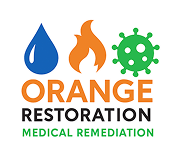Fire Damage Repair Video Transcription
So, you had a fire in your home. And there is a couple of things that you need to do right away. Obviously, the first thing is to make sure that, that fire has been extinguished completely and it’s not at risk of reigniting and continuing to burn your home, further damaging your house, and putting you and your family in harm’s way.
The second thing you need to do is to contact your insurance company, and just let them know that you’ve had a fire in your home, and that there’s fire damage to your property and your contents. That’s about all the information you need to give them right off the bat.
And once you’ve done that, it’s time to hire a professional fire Damage restoration contractor. If you look at a lot of my videos, most of the time I’ll give you advice and let you know how you can take care of a lot of different damages by yourself and do-it-yourself. When it comes to fire damage, I definitely would not recommend trying to clean this up and handling it on your own.
There’s a lot of detail and sensitive clean-up things that must happen to make sure that your insurance covers all the damage that happened to your home and your personal property in its entirety. You don’t want to do anything to jeopardize that.
Fire Damage Repair: Restoring Safety, Air Quality, and Peace of Mind
When a fire strikes your home, the immediate concern is always safety. Once the flames are out and the danger has passed, the real work begins, restoring your home to a clean, safe, and habitable condition. Fire damage affects far more than what’s visible. Soot, smoke residue, and ultrafine particles can linger in the air and deep within your home’s structure, continuing to cause harm long after the fire is extinguished.
Step 1: Ensure the Fire Is Fully Extinguished
The very first step after any fire is confirming that it has been completely extinguished. Electrical fires, grease fires, and appliance-related incidents can easily reignite if power sources aren’t properly disconnected. Always shut off electrical breakers, unplug damaged appliances, and contact your local fire department if you’re unsure whether the fire is fully out. Even a small smoldering ember can reignite and cause secondary damage.
Step 2: Contact Your Insurance Company Immediately
Next, notify your insurance provider as soon as possible. At this stage, you only need to report the essential facts, that a fire occurred, and your property and contents were damaged. Your insurance adjuster will guide you through documenting losses, arranging assessments, and selecting a qualified restoration contractor. Avoid beginning cleanup until the damage has been officially documented, as premature cleaning can complicate your claim or reduce coverage.
Step 3: Hire a Professional Fire Damage Restoration Contractor
Fire damage restoration is not a DIY project. While small water leaks or minor smoke stains may seem manageable, post-fire cleanup involves toxic residues, complex deodorization processes, and detailed documentation for insurance purposes. Hiring an IICRC-certified fire damage restoration contractor ensures that your property is handled safely and thoroughly, minimizing both financial and health risks.
A professional team will perform:
- Comprehensive inspection of structural and surface damage
- Soot and smoke residue removal using specialized HEPA filtration
- Deodorization and neutralization of volatile organic compounds (VOCs)
- Contents inventory for insurance documentation
- Testing for particulate and chemical contamination
Step 4: Why Medically Sound Remediation (MSR) Matters After Fire Damage
Traditional fire cleanup often focuses on aesthetics, removing stains, repainting walls, and airing out rooms. However, research shows that ultrafine particles, similar to those produced by mold or combustion, can remain suspended in the air for weeks or even months after a fire. These particles penetrate HVAC systems, furniture, and porous building materials, potentially triggering inflammation, respiratory distress, or chronic fatigue-like symptoms.
That’s where Medically Sound Remediation (MSR) comes in. Our team at Orange Restoration uses science-based cleaning methods designed for health-sensitive environments. By following small particle cleaning (SPC) protocols, we go beyond standard restoration to target contaminants smaller than 0.3 microns, the same size range that can exacerbate CIRS (Chronic Inflammatory Response Syndrome) or other inflammatory conditions.
Our medically sound approach includes:
- Negative air containment to prevent cross-contamination
- HEPA vacuuming and air scrubbing for ultrafine particle capture
- Surface and air testing to verify safe post-remediation conditions
- Collaboration with Indoor Environmental Professionals (IEPs) for third-party validation
The result isn’t just a home that looks clean, it’s one that’s certifiably healthy and safe to breathe in again.
Step 5: Document Everything for Your Insurance Claim
As repairs progress, maintain a detailed record of all communications, receipts, and reports. A reputable contractor will assist with photographic documentation, damage assessments, and direct communication with your adjuster. This transparency ensures you receive the full compensation you’re entitled to under your policy.
Step 6: Preventing Future Fire Damage
Once your home is restored, prevention becomes key. Regularly inspect electrical wiring, outlets, and appliances. Replace frayed cords, clean dryer vents, and test smoke alarms monthly. Consider having an electrician inspect your system every few years, especially in older homes where outdated wiring poses hidden risks.
Final Thoughts
Fire damage doesn’t just threaten your property, it can impact your long-term health if invisible contaminants are left behind. Choosing a restoration company that specializes in Medically Sound Remediation and SPC cleaning gives you confidence that your environment is restored to true safety, not just surface cleanliness.
At Orange Restoration, we combine IICRC standards with advanced CIRS-aware cleaning protocols to ensure every client’s home is both structurally repaired and biologically clean. If you’ve recently experienced a fire, or if your home still smells of smoke after prior repairs, contact our certified team for an expert evaluation.
